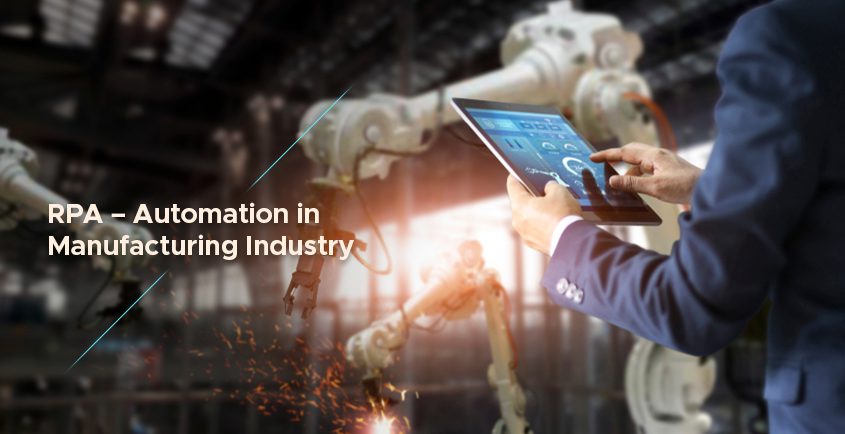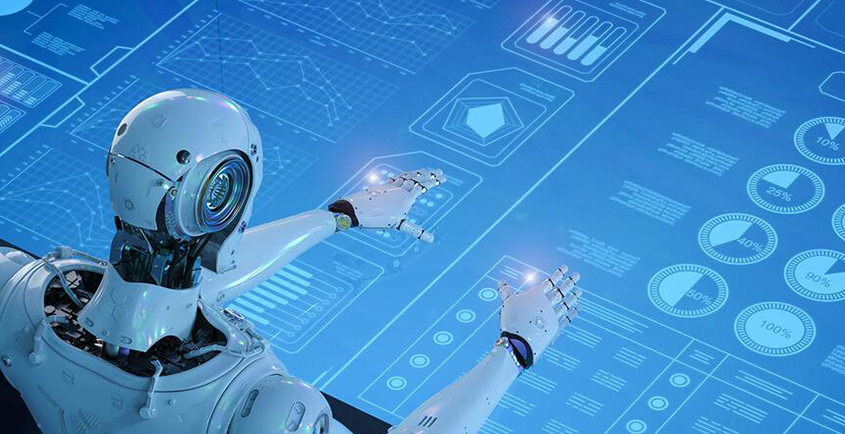Supply chain management (SME) refers to the path of a commercial product from its inception (or creation) to sale. Every business with a SME component has a compelling interest to minimize cost and time when offering a product for sale in the marketplace. To obtain a competitive edge, some companies have begun to implement Robotic Process Automation in supply chain as an effective way of reducing cost and time.
Specifically, RPA in the realm of SME has the potential of automatically extracting sales order data from all order types and eliminate data entry errors by automating major order processing steps and managing complex roles.
RPA technologies are still relatively new and many SME companies have no idea of its benefits. Thus, if you are unaware or are even vaguely aware of how RPA in supply chain can transform the supply chain, this blog is for you.
RPA History
RPA is the new buzzword in the IT sector. Regarded as one of the most powerful technologies that promises to change the future, integration of RPA in business is changing the manner from which organizations are streamlining the processes.
Previously, implementing RPA technologies was specific to IT companies, but over the past decade, its landscape has grown to include the retail sector, healthcare organizations, and supply chain management.
Robotic process automation is a modern technology that allows companies to automate complex and repetitive tasks. Software bots are programmed to carry out specific tasks to streamline the activities that take up the major chunk of the time of human workforce and reduce manual errors.
According to Gartner, the use of RPA in the U.S. increased 19.5% from 2021 to 2022. This is evidence that the popularity of RPA is growing with each passing year, in every sector, and is expected to catalyze in 2023.
Now that you have an idea about RPA, let’s discuss the key benefits of robotic process automation in supply chain.
Benefits of RPA
RPA is implemented in SME to help automate complex processes, eliminate errors, increase proficiency, and reduce the turnaround time. Since supply chain is an industry that is fueled by speed and accuracy, RPA is a technology that can deliver the same.
With the RPA the supply chain can increase operational efficiency and increase productivity thereby giving them an added advantage over the clients.
Apart from streamlining the processes, there are various advantages of integrating RPA in supply chain. Here are some of the key benefits
- RPA can help you cut back on the manual work as it can automatically undertake these tasks increasing the efficacy.
- One-time RPA implementation can help in cost cutting as more automation means less workforce which ultimately leads to fewer people required for the job. Thus, lesser payouts.
- There is a slight chance of error in data management as everything is undertaken by the automation software. Whereas there are always chances of error in human-led jobs, a well-programmed robot doesn’t leave room for any mistakes.
Well, advantages are obvious, but understanding the use cases is an important part of discussion of RPA in supply chain. Let’s zero in on the significant use cases
Use Cases of RPA in Supply Chain
Here is a rundown of the most important RPA use cases for the supply chain and associated factors:
1. Order Management
This is a priority task of any supply chain. Depending on the size of the company, thousands of requests must be processed and checked everyday before delivery and receipt processing. However, doing this physically can engage a lot of workforce, which will eventually lead to people shifting their focus from the important tasks.
However, by integrating RPA in supply chain, the entire order management process can be automated. RPA can also be developed and implemented to identify errors and warn authorized personnel when necessary. The RPA bots are so efficient that the errors only happen for only a fraction of orders.
2. Stock & Inventory management
Since it is a supply chain, there are always stocks to check and inventory to manage. Traditionally, these stocks have been checked by people, which has led to common human errors and a waste of productive man hours.
Since the entire process requires a lot of information, robotic process automation in supply chain and operations can screen the inventory, stock, amount of the items, send a warning and even request new items when required. Thus, maintaining the inventory at all times.
By monitoring the stock from time to time, these robots can improve the entire stock management process.
3. Receipt management
Data and orders yield receipts that require high-volume management and entry, making it perfect for automation. Intelligent automation software can easily process receipt reports from providers making the entire receipt management process fast and error-free.
4. Customer and People Management
The entire supply chain deals with numerous people at every point. These people are not only customers as end users but are also the people working in the internal processes of the supply chain, including suppliers, manufacturers, distributors, and vendors.
Since customers and personnel management is an important part of every business and industry, there must be a process that deals with the account of automation, messages and notices can be sent to them during the entire process.
As for the process pertaining only to the customers, RPA can manage everything right from the time the request is processed, delivered, or canceled.
To summarize, robotic process automation in supply chain can operate smoothly while providing a superior client experience in the supply chain and operation industries.
5. Data Management
There is high-volume data coming in from various channels in the supply chain. Due to the large amount of information and data that the firms handle, the data management duties can be time-consuming and boring. Processes like these are ideal for automation.
RPA routines the tasks like data validation, data entry, management and reviewing freeing up the resources to be more productive and undertake the jobs that require human intervention.
6. Planning Supply and Demand
One of the core jobs of supply chain is planning the supply and demand. These jobs are exceptionally vast and require a large number of human laborers, which leads to common human errors. The planning requires going through the reports at large for getting information from the market, providers, clients, and the organization.
Using RPA in the supply chain can carry out these tasks quicker and without errors. When integrated with the help of professional RPA solutions providers, the automation software can do tasks like reporting which will offer organized information that is easily accessible.
7. Produce Important Process Data
If you own the supply chain, you must be in charge of all the data. These intelligent automation robots can help you gather precise information regarding process efficacy, loopholes, gaps in the process, and knowledge regarding areas that need repair.
These gaps can be bridged using the automation software resources, and deliver the capabilities that can only be brought by intelligent automation.
8. Easy Automation
Automation is the need of the hour. May it be for the start-up businesses, medium sized businesses, or even the large ones, intelligent automation has the capability to drive excellent growth. While on the other hand, legacy systems may be a hindrance in the growth that is needed to outperform the competitors in this digitally driven world. Infact, according to Kommandotech, 57% of organizations want to use automation to boost employee productivity and performance.
What’s the best part? You don’t really have to replace your legacy system to implement RPA technologies, as those built on no-code platforms can work efficiently the same way. In fact, because legacy software has been designed to emulate human user activities like clicks, it is usually easier to educate robots to utilize it.
9. Quick Financing
One of the most famous and looked-upon forms of automation in a company may be RPA in accounting and finance. Robots have the potential to reduce pressure since departments require reliable data and are familiar with the difficulties associated with maintaining accounting procedures in high-volume firms.
Future of Robotic Process Automation in Supply Chain
The RPA solutions and applications will frequently include aspects of intelligent automation including artificial intelligence and machine learning. Since these are the technologies of the future, it is obvious that they are here to stay and so is RPA. When it comes to RPA in the supply chain, the usage is only set to grow as the supply chain will continuously want to improve their operations.
In this future, the objective is to reduce human decision-making altogether.
However, some would consider it as an ill-effect of automation as it may lead to lesser work force requirement, while others say that RPA will help them work in a better way. In a study by KommandoTech, almost 70% of employees agree that automation will allow them to qualify for higher-paying jobs.
Based on the conflicting facts, we can say that this technology suits the future requirements brought by digitization.
The supply chain runs on highly complex and high-volume data. Apart from the data, there are multiple monotonous tasks that can be automated and are currently taking up the workforce allowing the human labor force to focus on more important tasks for the organization. If you are considering joining the bandwagon of automation, now is an excellent time to consider the same and leverage the benefits of RPA in supply chain.
SVAM International Inc.
With the subject matter experts at SVAM International, you can integrate intelligent automation solutions into your business and enjoy the benefits of automation. We can help you define the RPA integration strategies, and the right RPA tool, and train the employees with RPA to ensure streamlined and smooth processes.
SVAM is on the way to use RPA in tandem with AI to increase the potential abilities of automation. In the future, we aim to deliver maximum performance with the intelligent automation solutions.
Implementation of RPA processes is vital and decides how the RPA will work in the future with the systems. If the implementation is not proper, there are chances that the automation might fail. Thus, the implementation must be done properly and by following the correct protocol.
1. Identification of a process
Determining the procedures that will gain from RPA implementation. This means looking at the current processes and figuring out which ones are time consuming, have chances of error and are repetitive enough to be automated.
2. Possibility and Method
Once the processes are identified, it’s also important to determine whether the selected processes are feasible enough to automate, fit to the technical demands and have complexity just precisely to fit to the automation.
3. Planning and Strategizing
After the process determination and possible assessment, it is time to create a strategy for carrying out the process. This includes determining the project’s goals, timing, budget, and resource as well as its scope.
4. Choosing Equipment and Technology
With such a variety of tools on the market, it is crucial to select those most appropriate that best meets the demands and specifications of the organization.
5. Training in Accordance with Flexibility
Automation is a fairly new technology and requires training. Thus, once implemented, employees are taught on proper usage of RPA in supply chain. This will ensure fail-proof ways of working with automation.
6. Testing and Deployment
Before the robotic process automation in supply chain is rolled out, the developed solution is tested to ensure intended performance.
7. Monitoring and Observability
Once the solution has been put into place, it is crucial to monitor it and make any necessary tweaks to make sure it functions well to suit your company. Additionally, it’s critical to regularly update the software to retain its efficacy.
The Bottomline
The supply chain runs on highly complex and high-volume data. Apart from the data, there are multiple monotonous tasks that can be automated and are currently taking up the workforce allowing the human labor force to focus on more important tasks for the organization. If you are considering joining the bandwagon of automation, now is an excellent time to consider the same and leverage the benefits of RPA in the supply chain.
To know more about our RPA services and solutions, get in touch with us today.






